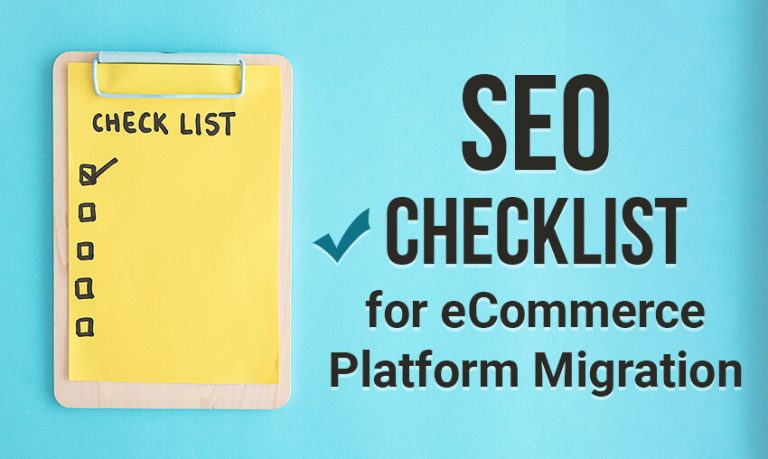Your ecommerce business is flourishing, and the orders are pouring in. You’ve put in tons of hard work and successfully managed to carve a space for your brand in the highly competitive online marketplace. Congrats and kudos for your success.
Now, comes the big question – what next?
Getting Bigger and Better by Moving to an Advanced Ecommerce Platform
Very often, most ecommerce store owners don’t spend much time choosing the right ecommerce platform while setting up their store initially. They fail to consider the long-term implications and future scalability while picking an ecommerce platform.
The result – they realize that the current ecommerce platform is not scalable and doesn’t provide the features and support that they need to grow. They look to migrate to a bigger and better ecommerce platform.
If that sounds like you, wait hold on! Before you flip the switch and migrate to an advanced ecommerce platform like Magento 2, Shopify, Woo Commerce, BigCommerce, and others, have you considered the SEO implications of the switch?

See How Our Experts Can Drive More Traffic to Your Website!
SEO: Boost your rankings and drive more organic traffic today!
Website Design/Development: Create a stunning website that converts visitors into customers.
Paid Media: Reach the right audience at the right time with expertly managed paid media.
Have You Considered The SEO Implications of Replatforming?
SEO is the beating heart of any ecommerce website. You may have built a successful online empire. But, if your site is not easily found on search engines, then all your efforts go to naught.
Whether you’re looking to migrate to Magento 2, switching from Shopify to Magento, or vice versa – you cannot afford to ignore the SEO implications of the switch. By failing to implement a well-planned SEO migration plan, your new store could lose a major chunk of its traffic. Your Google rankings may drop down, making it difficult for your target audience to come across your store online. Worst case, your potential customers may end up going to your competitors. You don’t want this to happen.
Worry not, we’re here to help. Here, in this guide, we provide you with an SEO checklist for migration. Using this guide, you can ensure that your site maintains your organic search rankings right from day one on the new platform. SEO should be part of the migration plan and not an afterthought.
Without further delay, let’s dive into the list of SEO deliverables that you should keep an eye on while switching ecommerce platforms.
SEO Migration Checklist for Ecommerce Websites
Without a detailed SEO strategy, you run the risk of losing traffic, which in turn impacts your sales and bottom line. SEO should never be an afterthought of migration. It should be considered right from the moment you start thinking of a move.
With the right planning and by fixing errors in your new platform before launching your site, you not only ensure that site traffic remains steady, but it can even help in improving the Shopify website SEO and boosting traffic volumes.
Here, we give you a list of all points that should be considered – before, during, and post-migration. The more time you spend ticking off items on this list, the lower the impact on your current SEO rankings.
1. Start by Making a List of all the URLs on Your Current Site
It doesn’t matter if you have a dozen pages or hundred-odd pages. You need to maintain a record of every URL on your current site so that you avoid missing out on valuable pages during the migration. While making this list, make a note of any existing redirects or broken links.
If the URL structure of your ecommerce site is changing because of migration, make sure that you do not include any redirect chains – redirects that lead to another redirect and so on. Having multiple redirects increases page loading times, which can impact your ranking on search engines.
Handy Tip: Tools like Screaming Frog crawls your site automatically, providing you a complete list of all existing URLs, while also identifying redirects and broken links.
2. Make a List of All Changes to Site Architecture Due to Migration
Get your Magento or Shopify ecommerce development team to provide you with the complete list of changes that happen to your site architecture due to changes in the platform. Before you start the migration, it’s essential to keep track of all these changes.
Once you have this list, you need to set up a sandbox test. This gives you a clear picture of how these changes will act on the new platform. During the test, set the implementation as noindex and reset it after migration.
Here are a few things to look out for in changes to the site architecture:
- Site hierarchy
- Changes to menu and breadcrumb navigations
- Changes to URL naming conventions
3. Page Redirects – Mapping Old Pages on Your Existing Site to New Pages on Your New Site
Mapping redirects is an important part of site migration. It ensures that the Magento SEO rankings that you’ve built for your old page URLs are passed on to the corresponding new URLs.
Here are a few points to keep in mind, while using page redirects
- While building a new site, you need to ensure that every URL on your old site is mapped to a corresponding URL on the new site or is designated as a 404 page.
- You are maintaining the same URL for the new page – In this case, the page’s content is not likely to change much, and you don’t have to do anything from an SEO perspective.
- If you’re changing URLs – Then always make use of 301 redirects. The 301 redirect lets the search engine know that users who land on the old page should be redirected to the new page. It also informs the search engine to pass on the benefits of the old page to the new page.
- When redirecting users from an old page to a specific new page, the new page should have content that is similar to the old page. For instance, if you’re sending users from a product page to a category page, then it’s not what the users expect, which could lead to a drop in traffic.
- Let’s say, the old page was a category page for women’s scarves, then the new page should also be for women’s scarves. Redirecting users to the women’s accessories page may feel relevant, but it doesn’t cut either your users or Google.
301 or 404? Which to Use?
Both 301 and 404 are used for different purposes. For instance, if you have a product that you no longer sell, then it’s best to use a 404. This prevents the page from being crawled and indexed, thereby keeping your search listings up to date. Avoid redirecting to a similar product page in this case. And Webpage removal request should be done in your search console account.
Use 301 redirects for inbound links. This way, you preserve the authority of inbound links, thereby preserving your current SEO rankings.
4. Preserve the SEO Ranking of Your Authoritative Pages
Make use of external link crawler tools like Open Site Explorer, and Ahrefs to create a sorted list of all your existing pages based on the number of inbound links and other page authority metrics. Identify the top-ranking pages and authoritative pages using this list.
In an ideal scenario, the URLs of your most authoritative pages should remain the same after platform migration. This helps you preserve your search engine rankings even after switching to the new platform.
5. SEO Factors to Check Post-Launch
Your custom ecommerce web design services team has successfully migrated your site to the new platform, and your new site is live. What next? Make sure to consider these factors post-launch so that you don’t lose out on your SEO rankings:
- Crawl the site manually. Check out all the pages and see if you can spot any errors – broken links, missing pages, wrong redirects, etc.
- Make sure that the new implementation is not using the noindex tag.
- Monitor your site traffic and page rankings to see if there are any significant changes.
- If you have included several redirects, then it may take some time for Google to identify your traffic as organic rather than direct. Google Analytics doesn’t consider redirected traffic as organic traffic, and it may take some time for the index to be updated.
What About SEO for New Pages?
This is an important question and needs to be addressed. While migrating your site to a new platform, you are likely to create a few new pages. Here are a few points to keep in mind, during the creation of new pages:
- Focus on two or three keywords for each page. Choose one main keyword and two secondary ones.
- Make sure to create a page title, header tags, meta descriptions, alt tags for images, internal links, and page copy to boost the SEO ranking of the new pages.
Make Use of The Replatforming to Boost Your SEO Rankings
Any major change you make to your ecommerce site – like migrating to a new platform – will have a significant impact on your SEO rankings. Your rankings could go down temporarily. But, by planning and checking the factors listed here, you can keep the disruption minimal.
Another hidden benefit of migrating to a new platform is that – it allows you to carry out in-depth SEO for your ecommerce site. If you have experience with SEO strategies and techniques, you can do it on your own. Else, you can hire a professional SEO agency to help you out. Look for areas where you can boost your SEO ranking.
Remember that one of the goals of shifting to a new platform is to make your ecommerce site more SEO-friendly than before. Use this opportunity and boost your site visibility, pulling in more traffic, driving sales, and increasing your bottom line.






